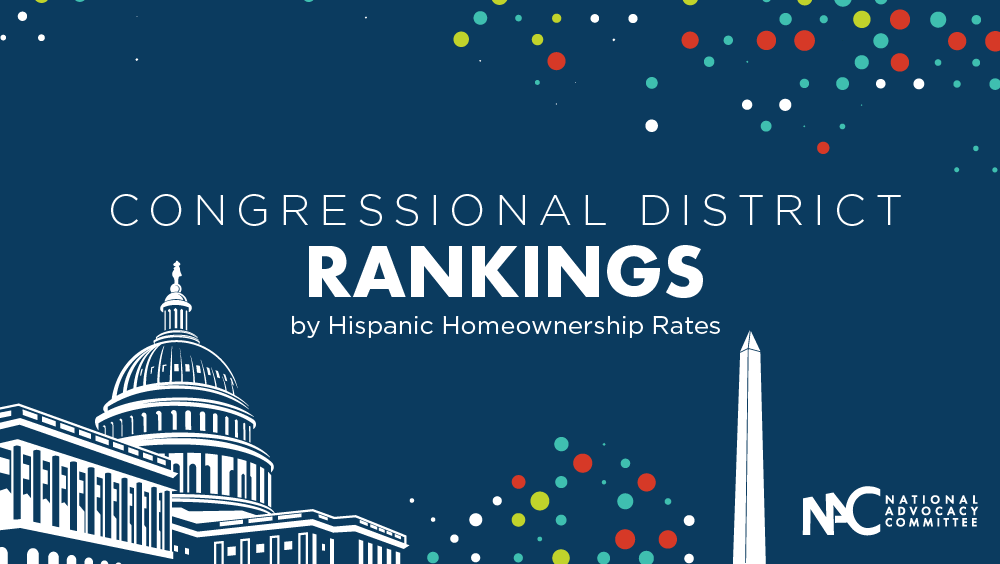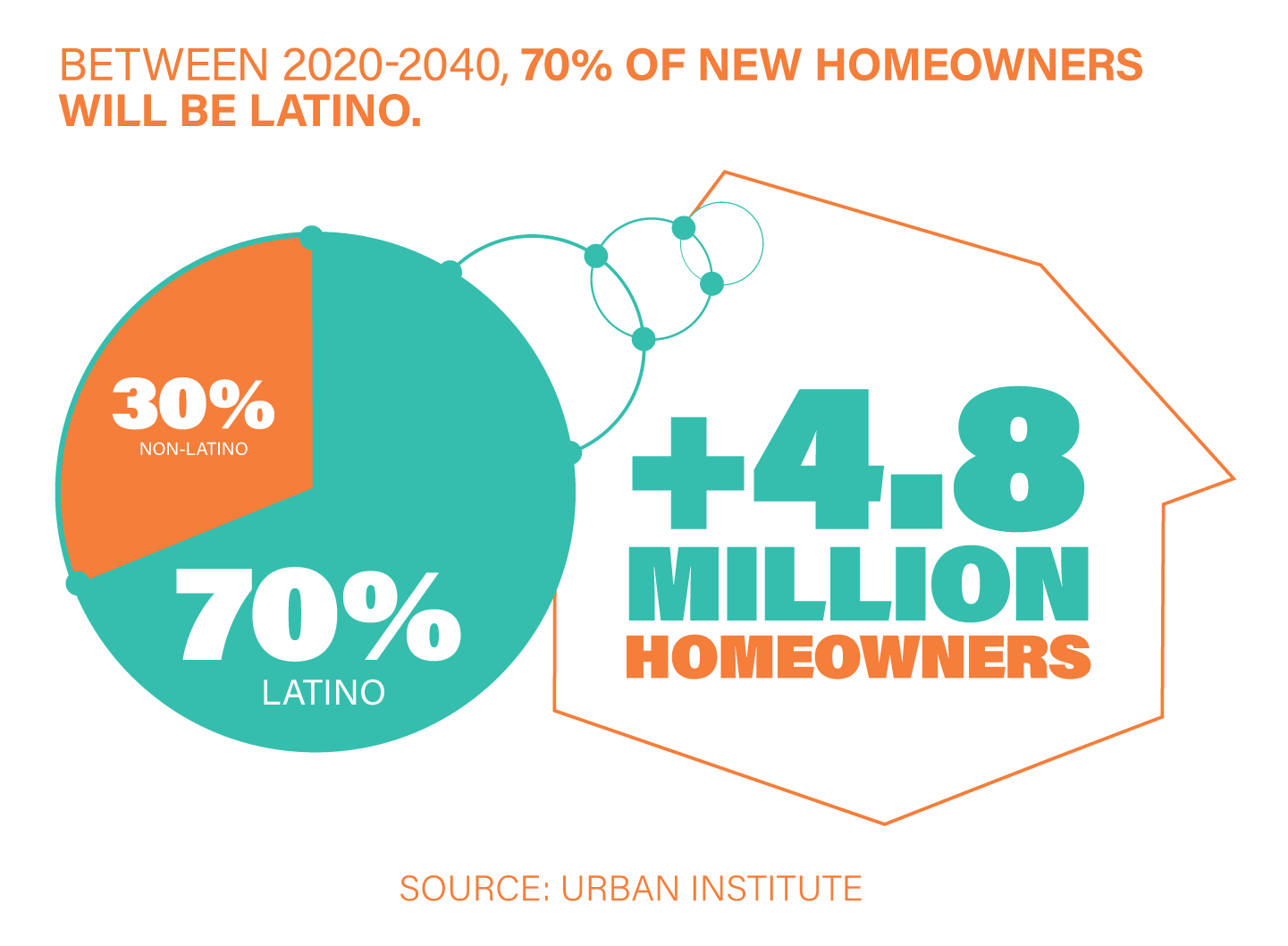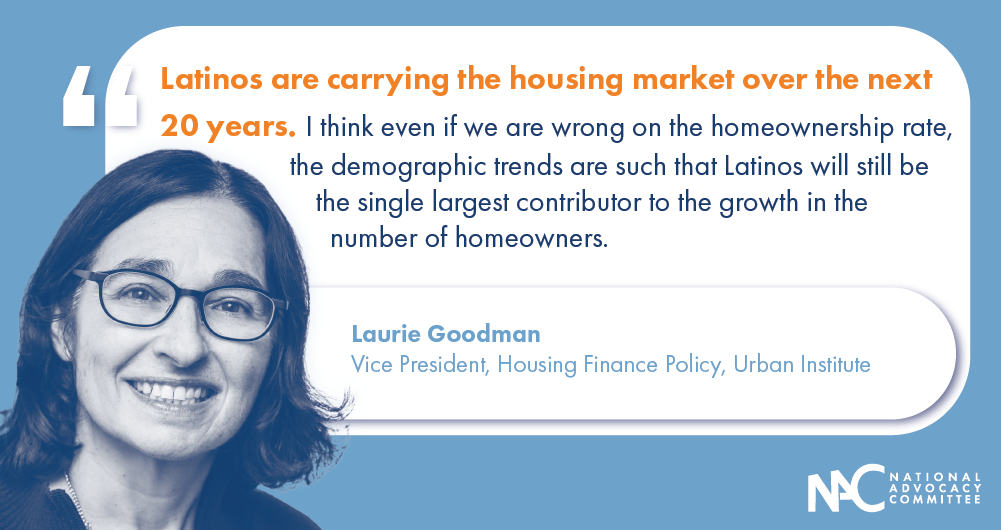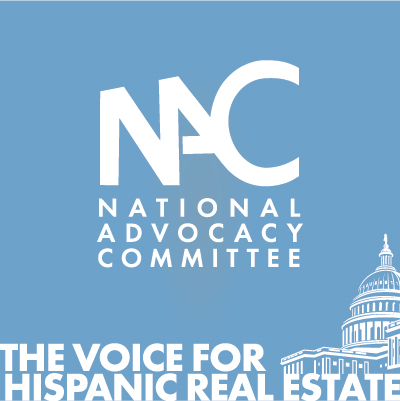A look inside that “70%” projection we’re all talking about
Celebrating NAHREP familia, cultura, politics, and grassroots action
May 13, 2021
Qué onda mi gente?!
We are right in the middle of Capitol Hill Visits! Felicidades to all of our chapters who have spent time prepping for these meetings and have represented our organization and our mission with pride. It’s been amazing to see you all in action this week.
As we meet with these offices, Congressional leaders are deciding what exactly will be in the infrastructure package. As you know, we’ve been in the middle of a campaign to ensure that housing production is included in the final infrastructure package. All of you sharing your housing inventory stories matters.

To correspond with our Capitol Hill Visits, we also released a tool on our website that ranks congressional districts by their Hispanic Homeownership Rate. Make sure you check out how your district ranks compared to the rest of the country or compared to the rest of your state. If you’re on Twitter, tweet the ranking to your representative and tag them!

Over the next 20 years, Latinos are projected to account for 70% of new homeowners
One of the standout data points we spoke about in our conference and highlighted in our State of Hispanic Homeownership Report is the Urban Institute projection that Latinos are set to account for 70% of homeownership growth over the next 20 years. Yes, I’m also still processing that.
Who came up with this projection? None other than Laurie Goodman, the Vice President of Housing Finance Policy at the Urban Institute, one of the most respected economists when it comes to homeownership. I have a tremendous amount of respect for Laurie and feel privileged to get to work with her on our quest to bettering the housing market through public policy.
That’s why I thought I would interview her to go deeper into this extraordinary number.
To read more housing projection insights from the Urban Institute, download the The Future of Headship and Homeownership Report here.

Q: In your report, you stated that 70% of new homeowners over the next 20 years will be Latino. Tell us how you came up with that number.
Laurie: The projections are based on historical transition rates for headship and homeownership. To project future rates, we begin with data from 1990 to 2018, estimate the 2020 results, and then project through 2040 what share of the adult population will be householders (the headship rate) and what share of householders will be homeowners (the homeownership rate) for each race or ethnicity and age group. For example, we will look at the homeownership rate of Hispanic families in 1990 with a household head that is 25-34, we then look at the homeownership rate of this same cohort 10 years later, in 2000 when they are 35-44, and again in 2010 when they are 45-54. Doing this across time and age groups allows us to develop a series of rates measuring the rate at which families transition into homeownership as they age. These transition rates form the basis of our analysis.
Q: Is that prediction assured?
Laurie: No, the predictions are not assured. Actually, in our underlying paper, we show a range of estimates based on historical patterns, including a slow scenario, an average scenario, and a fast scenario. However, we focus our discussion on the average scenario. Moreover, the predictions are based on historical patterns, the future may look different than the past. In addition, policymakers have the ability to increase homeownership rates through policy changes, which could make homeownership more accessible to credit-worthy borrowers.
Q: Are Latinos then carrying the housing market over the next 20 years? What happens to the overall homeownership rate if that prediction doesn’t come true?
Laurie: Yes, Latinos are carrying the housing market over the next 20 years. I think even if we are wrong on the homeownership rate, the demographic trends are such that Latinos will still be the single largest contributor to the growth in the number of homeowners. We know how much younger the Latino population is than the White or Black population; so many Latino will be aging into their prime homebuying years.
And there you have it familia! Un abrazo.

About Noerena Limón
Noerena Limón is NAHREP’s Executive Vice President of Public Policy and Industry Relations. Noerena heads the organization’s policy and advocacy efforts on issues ranging from homeownership, housing inventory, credit access and immigration.
Prior to joining NAHREP, Noerena spent six years at the Consumer Financial Protection Bureau (CFPB) and served as a political appointee under President Obama in the White House Office of Political Affairs.




